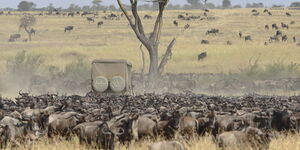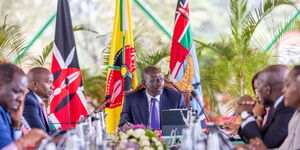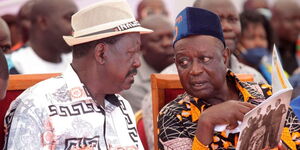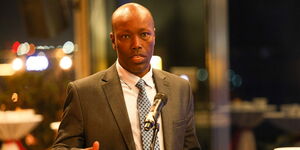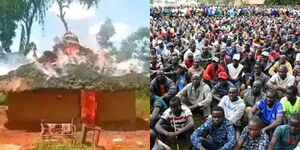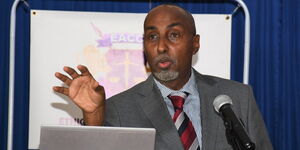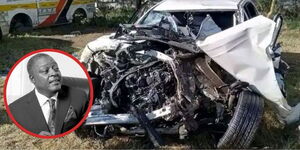As Kenya hosts the fifth edition of the revamped World Rally Championship Safari Rally that runs from Thursday, March 20 to Sunday, March 23, many Kenyans will look back at the nostalgia of the rally that first began in 1953.
The Safari Rally, formerly known as the East African Coronation Rally, was established after the late Queen Elizabeth II of England after her coronation. A conversation between two motorsport enthusiasts Eric Cecil and his cousin Neil Vincent in early 1952 inspired the creation of a motorsports event that would later earn the brutal reputation of the ‘World’s Toughest Rally.’
Vincent, not wanting to compete at the newly built Langa Langa circuit, which was in Malewa, Rift Valley, said: “I can imagine nothing more boring than driving round and round the same piece of track. But if you organise an event where we get into our cars, slam our doors, go halfway across Africa and back, and the first car home is the winner, I will be in it.”
With that, the ‘Coronation Safari’ was born, becoming an annual event with the race starting in Nairobi, going around Lake Victoria through Uganda and Tanganyika (Tanzania), before finishing in Kenya. The rally quickly caught on, getting recognition from international rally federations.
In 1957, the FIA marked the rally on its international motorsport calendar. The event was moved forward from the end of May to Easter weekend so it would not interfere with other European events. In 1960, it was rebranded as the East African Safari Rally.
In 1963, the EA rally witnessed one of the most grueling races where only seven out of 84 racers finished the race. From this challenging rally, icons would emerge, drivers who would be talked about through the ages. The drivers from 1963 became known as “The Magnificent Seven" or "The Unsinkable Seven." They included Nick Nowiki, Peter Hughes, Jim Cardwell, Joginder Singh, Hugh Lionnet, J.S. Bathurst, and Bill Bengry. The rally was won by Nick Nowicki in his Peugeot 404.
Notably, Joginder Singh, a Kenyan who finished fourth, would later become a three-time Safari Rally winner and earn the nickname "The Flying Sikh." Singh won the event in 1965, 1974, and 1976. His 1965 victory in a Volvo PV544, navigated by his brother Jaswant Singh, earned him the title "Simba ya Kenya" (Lion of Kenya), cementing his place in the nation’s motorsport history.
The success of the rally grew in leaps and bounds, resulting in the event being recognised by the Fédération Internationale de l'Automobile (FIA). In 1973, the rally was run as an FIA event for the first time. After 1974, the rally ran within the borders of Kenya and would eventually be known as the Safari Rally.
The newly founded international recognition and the financial backing it came with blew up the rally event to stratospheric levels. Traditionally held over the Easter weekend, this period attracted global attention. The rally became synonymous with adventure, drawing massive local and international audiences.
Manufacturers and drivers were eager to conquer the demanding African landscapes, with more and more drivers streaming in to take part in the motorsport marvel.
However, amongst all the rough diamonds, one emerged from the dust, polished and shining bright. This was Shekhar Mehta who holds the record for the most Safari Rally wins. Mehta dominated the event with five victories, including four consecutive wins from 1979 to 1982, all in Datsun vehicles.
His first triumph in 1973, alongside co-driver Lofty Drews, marked a defining moment in Kenyan motorsport.
Mehta's success had a profound impact, inspiring a new generation of Kenyan drivers and helping the rally gain international recognition. It was his triumph that played a role in the Safari Rally's official entry into the WRC calendar, sanctioned by the FIA.
His dominance in the event later earned him the title of “The Safari Sheikh,” as he had made the rally his own personal event. Mehta died in 2006 but left a legacy and fond memories of the giant who conquered the “World’s Toughest Rally.”
Aside from Mehta, foreign racers who became legends were Björn Waldegård, Juha Kankkunen, Tommi Mäkinen, and Colin McRae who all tamed the African wilderness.
But as WRC modernised, the sheer scale of the rally became difficult to sustain. By 2002, financial and logistical challenges forced its removal from the calendar. Many feared it was the end of an era. They were wrong.
In 2019, it was confirmed Safari Rally Kenya was coming back. Originally scheduled for 2020, the much-anticipated return was postponed due to the COVID-19 pandemic. But when Safari finally rejoined WRC in 2021, it proved that its legend was alive and well.
The modern-day format brought closed-road special stages, but the challenge remained monstrous. Rough gravel, deep sand, unpredictable water crossings, and wild weather kept crews on edge.
The first event back delivered classic Safari heartbreak. Thierry Neuville dominated early on, only for a broken suspension to cruelly deny him victory on the final morning, handing the win to Sébastien Ogier.
Since then, Safari Rally Kenya has cemented itself as a modern WRC classic. Ogier triumphed again in 2023, while Kalle Rovanperä’s victories in 2022 and 2024 extended Toyota GAZOO Racing’s unbeaten streak in the rally’s new era.
It may no longer be a marathon, but make no mistake—Safari Rally Kenya is still one of the toughest, most unpredictable motorsport events in the world.
The only question is: who will tame the Safari this time?


